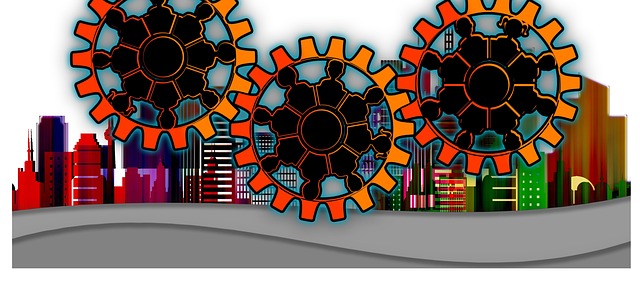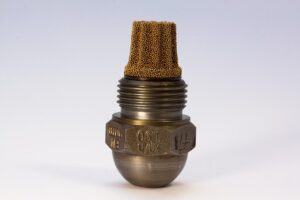Commercial air curtain heaters, advanced heating solutions for industrial spaces, maintain optimal temperatures while saving energy costs through heated air barriers. Relation extraction, a powerful tool, streamlines repair part identification using data analytics and natural language processing from diverse sources like manuals, online discussions, and service reports. This technology enhances maintenance efficiency, minimizes downtime, and promotes energy-efficient solutions for various commercial environments, especially warehouses, retail stores, and industrial facilities in harsh climates. Future advancements promise predictive analytics for proactive maintenance strategies, further revolutionizing commercial entrance heating management.
Relation extraction plays a pivotal role in streamlining maintenance for commercial air curtain heaters by identifying critical repair parts links. This article delves into the intricacies of these systems, highlighting their importance in various industries. We explore how relation extraction techniques uncover vital connections between components, simplifying the part sourcing process. Additionally, we discuss innovative strategies employed to enhance maintenance efficiency and offer insights into future prospects, ensuring optimal performance for these essential heating solutions.
- Understanding Commercial Air Curtain Heaters: A Brief Overview
- The Role of Relation Extraction in Identifying Repair Parts
- Uncovering Links: Strategies and Techniques Employed
- Streamlining Maintenance: Benefits and Future Prospects
Understanding Commercial Air Curtain Heaters: A Brief Overview

Commercial air curtain heaters are specialized systems designed to provide efficient and effective heating solutions for various industrial and commercial settings. These heaters utilize advanced air curtain technology to create a barrier of heated air, preventing cold drafts from entering and maintaining optimal indoor temperatures. By integrating door heating systems or warehouse entrance heating, they ensure energy-efficient climate control in spaces like retail stores and industrial facilities.
The primary advantage lies in their ability to offer both comfort and cost savings. Heated air curtains reduce the need for excessive heating of large areas, making them ideal for maintaining comfortable environments in expansive warehouses, entranceways, and retail stores. This technology is particularly valuable in harsh climates where commercial buildings require robust heating systems like industrial air barriers to withstand extreme weather conditions while optimizing energy usage.
The Role of Relation Extraction in Identifying Repair Parts

Relation extraction plays a pivotal role in identifying repair parts for commercial air curtain heaters. By analyzing vast amounts of textual data from product manuals, online forums, and service reports, this technique extracts relevant information about specific components, their functions, and common failure points. This process facilitates faster and more accurate identification of replacement parts, reducing downtime for commercial entrance heating systems.
Moreover, relation extraction enhances the overall efficiency of air curtain technology by connecting disparate data points related to door heating systems, warehouse entrance heating, and industrial air barriers. It leverages advanced natural language processing algorithms to uncover hidden relationships between different components, ensuring that repairs are performed using energy-efficient heating solutions suitable for retail stores and other commercial spaces.
Uncovering Links: Strategies and Techniques Employed

Uncovering links between commercial air curtain heaters and their repair parts is a meticulous process that involves several strategic techniques. By employing advanced data analytics and natural language processing, researchers can sift through vast amounts of online information to identify patterns and connections. This includes scrutinizing product descriptions, manufacturer websites, online forums, and industry databases.
For instance, leveraging air curtain technology keywords like “commercial entrance heating” or “door heating systems” can help uncover relevant repair part discussions. Additionally, focusing on energy-efficient heating solutions and industrial air barriers emphasizes the importance of identifying specific components for commercial air curtain heaters. This strategy ensures that businesses seeking replacement parts for their heated air curtains, warehouse entrance heating, or retail store heating find accurate links to meet their needs.
Streamlining Maintenance: Benefits and Future Prospects

The integration of relation extraction techniques in identifying and streamlining commercial air curtain heater repair parts links offers significant benefits for maintenance processes. By analyzing vast amounts of data, this technology ensures that businesses have quick access to the right replacement parts for their commercial air curtain heaters, minimizing downtime and enhancing operational efficiency. This is particularly advantageous for warehouses, retail stores, and industrial facilities where efficient door heating systems and entrance climate control are vital for maintaining productivity and energy efficiency.
Looking ahead, the future of maintenance in the context of commercial air curtain heaters appears promising with advanced relation extraction methods. These advancements could lead to more sophisticated predictive analytics, enabling proactive maintenance strategies. This would not only reduce the need for costly emergency repairs but also contribute to overall cost savings and improved sustainability through enhanced energy-efficient heating solutions. Air curtain technology, when combined with strategic relation extraction, has the potential to revolutionize how commercial entrance heating is managed, setting new standards for industrial air barriers in today’s dynamic business landscape.
Relation extraction plays a pivotal role in streamlining maintenance for commercial air curtain heaters by identifying and linking repair parts. By employing advanced techniques, this process unearths crucial connections within complex datasets. As we look to the future, leveraging these insights can enhance efficiency, reduce downtime, and foster proactive maintenance strategies for these vital heating systems.






